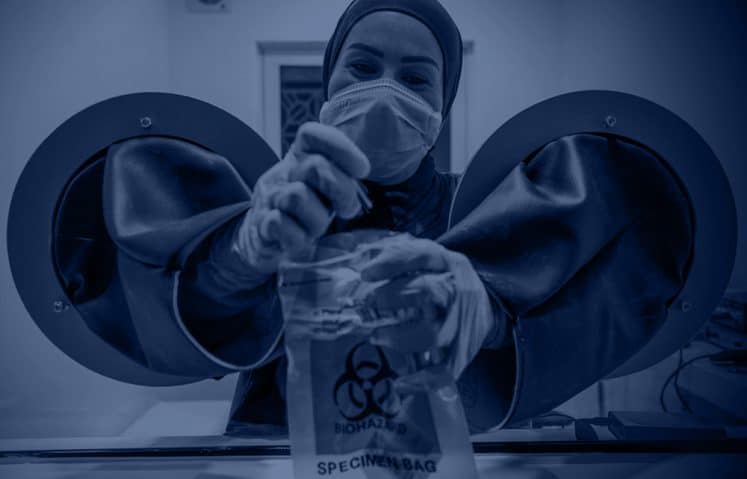
In the healthcare sector, dealing with life and death situations is part of the job. Medical staff are trained to be resilient, to handle pressure and to make tough decisions based on a deep level of expertise, data and sometimes pure professional instinct.
For healthcare communications teams, handling a crisis in an era of Covid-19 has some striking parallels. The way communications are handled; the effectiveness of a public health message or the penetration of a staff memo containing critical guidance can now be the difference between prevention and life-threatening illness.
Since the global pandemic made its unwelcome entry into our daily lives, those of us who work at Seha, the Abu Dhabi Health Services Company, have been at the forefront in supporting society’s efforts to fight against the virus.
As an organisation we have had to adapt quickly, building entirely new hospitals in a matter of weeks, setting up world-class testing facilities in a similar time frame and finding ways for our staff to navigate an entirely new and novel disease. The speed of this response has seen one of the biggest mobilisations of collective efforts the UAE has ever seen.
And more than ever before, we are seeing the value of good communication. I have learned a few lessons, based on four key observations from my experience at Seha during this pandemic:
Pandemics spread quickly, and communication within the health sector has to keep up
First, the Covid-19 pandemic has been a fast-evolving situation, requiring rapid organisational shifts that in normal circumstances would take months – if not years – to implement.
For instance, our work with the Abu Dhabi Department of Health and the exhibitions company Adnec to convert the latter’s facilities into field hospitals capable of handling 1,000 patients involved massive mobilisation. Equally, when the government directed a huge increase in testing capacity, including innovative drive-through facilities, we had to engage a wide array of people in the space of a few weeks.
Communicating information between all of these groups has to be a quick and effective process in order to ensure that hospital administrators, staff and external partners are aligned and understand their role in a wider mission. It also means ensuring that patients know what to do.
Teams need to be well-rounded and ready to learn new skills
Second, you need strong teams that can work together. For communications staff at Seha, the challenge of supporting the organisation in the fight against the pandemic has meant a vastly accelerated evolution in our team. This has meant growing in key areas like digital and social media, while expanding capabilities in corporate communications. All of this requires fast-tracking the learning process, too.
But above all, it has shown the value of combining specialist skills with more generalists capabilities. Not everyone can programme a new website or develop social media videos, but those skillsets are only part of the equation. It is the ability to blend these with less technical skillsets that sets a communications team apart and that is so critical during a period of crisis.
The pandemic is fast-tracking digitalisation
My third observation is that social and digital have played an elevated role during the crisis, both operationally and as a channel to get messages through.
Seha launched a dedicated WhatsApp number and chat bot early on in the pandemic to respond to questions from the public. According to a study by Kantar, a data insights firm, the platform has seen a 40 per cent increase in usage in just one week at the end of March, so it has been an essential channel in our efforts. In the UAE, with its high digital and mobile penetration, this has been vital in getting trusted and accurate information into the public’s hands.
Equally important has been upscaling our video and graphics content, as well as our social presence across all channels to reinforce core messages and provide reassuring advice. This has been essential across all areas of communications. Not only has it enabled Seha leaders to engage virtually with the community, but it has also brought richness to our internal communication.
Remember what is at the heart of health care: empathy
And finally, my last observation is that the Covid-19 crisis has reminded us all of a fundamental truth of communication: the importance of empathy. In the health sector, the number one concern is always the safety and care of patients. This public health emergency is a major opportunity for communications professionals to remind themselves of this, and to remind everyone else through their work that what we say – and how we say it – matters. Let’s hope we will seize the opportunity as communicators as we recover from the challenges we face today.